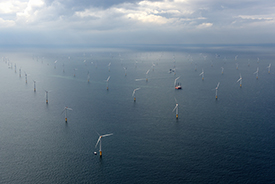26 Sept 2017
As part of the government’s Industrial Strategy, Jo Johnson, Universities & Science Minister, announced in 2015 the creation of the Science & Innovation Audits (SIAs) ‘with the ambition that we could develop better ways to identify and build on areas of greatest potential in every region’.
Last week, the second wave of SIAs became available – the first round was published in November 2016 – from bioeconomy in the North of England to the technology ecosystem in Oxfordshire. The reviews are part of a government movement towards a more devolved nation, as each SIA is a ‘forward-looking’ evaluation of a science and innovation in a region to capitalise on local interests, strengths, and opportunities.
Bioeconomy of the North of England
As the global population grows – it is set to increase to nine billion over the next 30 years – our food and energy demands will become reliant on cheaper and more effective renewable energy; 10% of which will come from bio-fuels and -energy. It is predicted that 50% of total agricultural output and 35% of the chemical industry will rely on biotechnology by 2030.
The North of England already has the highly-skilled employees – the region is home to 38% of the national chemical industry workforce – and business expertise needed to garner ‘global recognition’ in the industry, says the SIA. The audit identified 16,000 regional companies working in bioeconomy that employ 415,000 workers and have an overall annual turnover of £91bn.
With a strong underpinning industry already present in the North, the SIA have suggested the creation of a ‘Northern Bioinnovation’ programme that will continue to support businesses in the industry. This scheme will include the building of a biomanufacturing park and a possible £100m investment to the region to support scale-efficient and fee-processing industries to establish a competitive advantage.
The audit suggests that bioeconomy in the North of England should double by 2030 with these measures, increasing from £12.5bn to £25bn GVA.
Offshore Renewable Energy
Another renewable energy market that was reviewed in this wave of audits was offshore renewable energy in the North of England and Scotland, including more developed technologies such as offshore wind initiatives, to early-stage research in wave and tidal power.

Caption: Sheringham Shoal Offshore Wind Farm, off the coast of North Norfolk, UK.
Academic and industry collaboration is a significant strength in this area of the UK, notes the audit, as well as the large market already present in the region; Scotland is home to the first utility-scale commercial tidal stream project and the UK is currently the world leader in offshore wind capacity.
The SIA recognised almost 200 companies in the North and Scotland whose business centred on offshore renewable energy, and identified more than 500 more that could benefit from further investment to the industry to help nurture expertise and growth.
One of the main issues found by the audit was the lack of funding to SMEs and innovation-driven businesses in the North compared with Scotland – an apparent lack of coordination by the UK looking to drive ambition with investment. There is also a noted shortage of engineers and other associated professions, although arguably this is a national issue that cannot be solved by individual regions.
Further engagement between universities and industry through a focused programme of support is proposed by the audit. The Industrial Strategy Challenge Fund should also look to invest into digital technology being developed for offshore wind, the report says.
By Georgina Hines
Related links:
